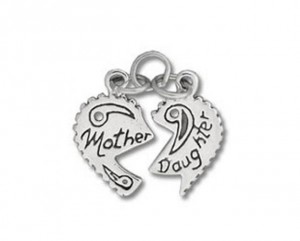 The easiest way to determine if a sterling piece is worth restoring is to decide if it has sentimental value. If so, then the best way to make it last for generations (or centuries) is with regular and proper maintenance. Whether silver plated or Sterling, the easiest way to protect your piece is through regular and gentle polishing. We recommend using Tarni-Shield (by 3M) polishing cream. Hagerty also makes a good polishing cloth (silver duster), but Tarni-Shield is a less abrasive polish, it leaves a protective finish, and it is what we use for hand polishing. Polishing your silver every few months is a good idea.
The easiest way to determine if a sterling piece is worth restoring is to decide if it has sentimental value. If so, then the best way to make it last for generations (or centuries) is with regular and proper maintenance. Whether silver plated or Sterling, the easiest way to protect your piece is through regular and gentle polishing. We recommend using Tarni-Shield (by 3M) polishing cream. Hagerty also makes a good polishing cloth (silver duster), but Tarni-Shield is a less abrasive polish, it leaves a protective finish, and it is what we use for hand polishing. Polishing your silver every few months is a good idea.
Whether it's silver plated or Sterling silver, never put silver in the dishwasher, never store it in a plastic bag, or use toothpaste as a cleaner. After using a silver piece (flatware or hollowware), wash it with a mild detergent and dry it with a soft cotton cloth. Never use a paper towel to dry or clean your silver.
Products and items that contain sulfur can also chemically react with silver and damage it to the point where it needs professional attention. Avoid prolonged contact with rubber bands, latex gloves, foods such as eggs and mayonnaise, and certain paints, as this can also damage silver. Tarnish is accelerated in humid environments.
[youtube https://www.youtube.com/watch?v=KV_e78V2Cz8]
In general, pieces made of Sterling silver are almost always worth restoring. In order to be considered Sterling silver, an item must be 92.5% silver (or have 925 parts per 1000). Thus items stamped "925" are Sterling.
Numbers stamped on a piece of silver can also be a good indicator of an item's worth. Although "925" is the most common indicator of silver content (Sterling), different countries have different standards of silver content, and other common stamps are "800," "875," "900," and "950." Again, these numbers are in reference to the silver content out of 1000 (800/1000).
In order to determine if an item is Sterling, it is best to look at the Hallmarks (stamps often found on the! bottom of the item). Two of the most common Sterling stamps are "925" and "Sterling," although many countries have their own unique stamps that indicate the silver content of an item. For example, Sterling silver pieces made in England are stamped with a lion passant in order to indicate that they are Sterling.
Because silver is a relatively soft metal in its purest form, it is almost always combined with other metals (usually copper) for strength and durability. Thus, if an item is Sterling (925/1000 silver), it is probably 75/1000 copper.
In addition to numbers, there are some common letters that can indicate an item's worth. For example, if there is an "E.P.N.S." on an item, this means that the item is silver plated. To be more specific, "E.P.N.S." stands for: electro-plated nickel silver. In other words, the item is silver plated with nickel as the base metal.
In general, whenever an item is stamped with a series of 3-5 letters, which include "E.P., " this means that it is electro-plated.
Another good way of determining if an item is plated or is Sterling silver, is to simply look at it and see if there are any spots of discoloration, particularly on the higher parts, ridges, or edges. Because these spots stick out, they tend to wear faster than other parts of a silver piece, and it is sometimes possible to see if the base metal is showing through. The two most common colors are a duller grey (nickel) and an orange (copper).
Because there are so many silver Hallmarks and they can be quite confusing, it is very likely that you may still have questions about a particular item. If you are still uncertain about what an item is or what a stamp means, it may be best to see an expert.







